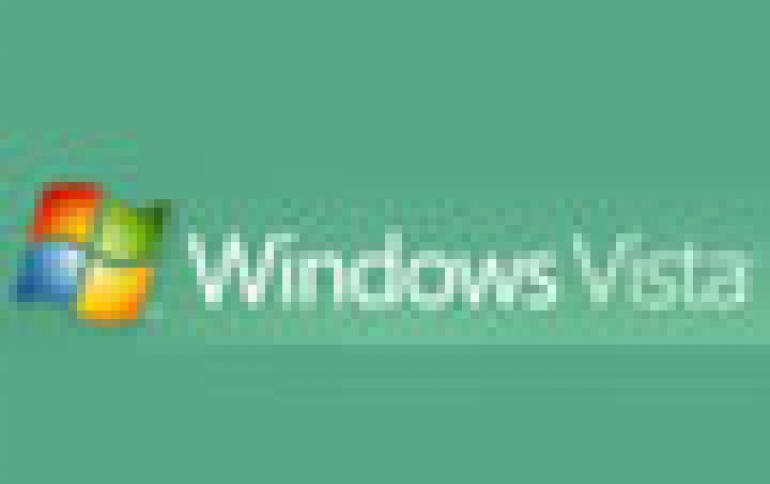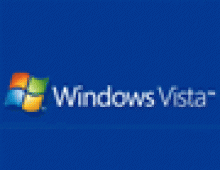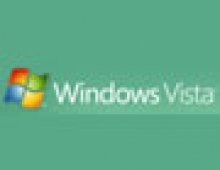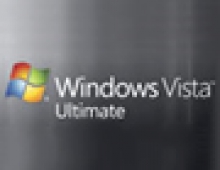
Microsoft Explains Vista ReadyBoost
As part of Vista's heuristic memory management system, the ReadyBoost technology promises significant improvements in performance, Jim Allchin, Co-President of Microsoft's Platform and Services Division explains.
If there is one thing that can really help applications on Windows Vista run better, it's memory. When comparing the performance of Windows XP and Windows Vista on a PC with 1 GB of main memory, Windows Vista is generally comparable to Windows XP or faster. However, we also know that in some cases, on PCs with 512 MB of main memory, applications on Windows XP may seem more responsive. Why? Mostly because the features in Windows Vista use a bit more memory to do the things that make it so cool, like indexing your data, keeping the fancier AERO UI running using the desktop window manager (DWM), etc. The less memory in your machine, the more often the OS must randomly access the disk. This slows system performs in cases where your applications just barely fit in memory on Windows XP but not quite in Windows Vista.
Microsoft redesigned the memory manager in Windows Vista so that if you give the system more memory, it uses that memory much more efficiently than previous operating systems via a technique called SuperFetch -- part of Windows Vista's intelligent heuristic memory management system. And so Windows Vista on a PC with even more than 1 GB of primary memory (say 2 GB) will generally outperform Windows XP on that same machine -- especially once you have been using the machine for some time because Windows Vista learns what you do the most often and optimizes for this.
While the generation of PCs that ship with Windows Vista are expected to include more memory, many existing PCs have 512 MB. While memory has gotten much less expensive, many people are just not comfortable opening up their PC and installing more memory. With Windows ReadyBoost, if you have a flash drive (like a USB thumb drive or an SD card) you can just use this to make your computer run better with Windows Vista. You simply plug in a flash drive and Windows Vista will use Windows ReadyBoost to utilize the flash memory to improve performance.
While flash drives do contain memory, Windows ReadyBoost isn?t really using that memory to increase the main system RAM in your computer. Instead, ReadyBoost uses the flash drive to store information that is being used by the memory manager. If you are running a lot of applications on a system that has limited memory, Windows ReadyBoost will use the flash drive to create a copy of virtual memory that is not quite as fast as RAM, but a whole lot faster than going to the hard disk. What is very cool here is that there is nothing stored on this flash disk that isn?t also on the hard disk, so if you remove the flash drive, the memory manager sees the change and automatically goes to the hard disk. While the performance gain from ReadyBoost is gone, you don?t lose any data and there is no interruption. And because the Windows Readyboost cache on the flash drive is encrypted using AES-128, you don?t need to worry about exposing sensitive data if the flash drive is stolen or lost. Also, the memory manager compresses the pages before writing them into the cache on the flash disk, which means you?ll get more mileage from each MB.
So, if you just want your PC to run faster with Windows Vista -- it's pretty simple -- connect your flash drive through any USB 2.0 socket or PCI interface and when the autoplay interface comes up, choose "Speed up my system using ReadyBoost." You need to have at least 230 MB free on the flash drive and some flash disks are not fast enough to support Windows ReadyBoost, although you?ll be told if that's the case.
If you want to learn more about ReadyBoost, Matt Ayers, the program manager for ReadyBoost, created a FAQ that Tom Archer posted on his blog that is really worth reading.
1 GB flash drives are available online for less than $50. If you put a flash drive into a Windows XP PC, you get access to files on the drive -- if you add that same drive to an identical machine running Windows Vista, you can also boost the performance of your PC with ReadyBoost.
Microsoft redesigned the memory manager in Windows Vista so that if you give the system more memory, it uses that memory much more efficiently than previous operating systems via a technique called SuperFetch -- part of Windows Vista's intelligent heuristic memory management system. And so Windows Vista on a PC with even more than 1 GB of primary memory (say 2 GB) will generally outperform Windows XP on that same machine -- especially once you have been using the machine for some time because Windows Vista learns what you do the most often and optimizes for this.
While the generation of PCs that ship with Windows Vista are expected to include more memory, many existing PCs have 512 MB. While memory has gotten much less expensive, many people are just not comfortable opening up their PC and installing more memory. With Windows ReadyBoost, if you have a flash drive (like a USB thumb drive or an SD card) you can just use this to make your computer run better with Windows Vista. You simply plug in a flash drive and Windows Vista will use Windows ReadyBoost to utilize the flash memory to improve performance.
While flash drives do contain memory, Windows ReadyBoost isn?t really using that memory to increase the main system RAM in your computer. Instead, ReadyBoost uses the flash drive to store information that is being used by the memory manager. If you are running a lot of applications on a system that has limited memory, Windows ReadyBoost will use the flash drive to create a copy of virtual memory that is not quite as fast as RAM, but a whole lot faster than going to the hard disk. What is very cool here is that there is nothing stored on this flash disk that isn?t also on the hard disk, so if you remove the flash drive, the memory manager sees the change and automatically goes to the hard disk. While the performance gain from ReadyBoost is gone, you don?t lose any data and there is no interruption. And because the Windows Readyboost cache on the flash drive is encrypted using AES-128, you don?t need to worry about exposing sensitive data if the flash drive is stolen or lost. Also, the memory manager compresses the pages before writing them into the cache on the flash disk, which means you?ll get more mileage from each MB.
So, if you just want your PC to run faster with Windows Vista -- it's pretty simple -- connect your flash drive through any USB 2.0 socket or PCI interface and when the autoplay interface comes up, choose "Speed up my system using ReadyBoost." You need to have at least 230 MB free on the flash drive and some flash disks are not fast enough to support Windows ReadyBoost, although you?ll be told if that's the case.
If you want to learn more about ReadyBoost, Matt Ayers, the program manager for ReadyBoost, created a FAQ that Tom Archer posted on his blog that is really worth reading.
1 GB flash drives are available online for less than $50. If you put a flash drive into a Windows XP PC, you get access to files on the drive -- if you add that same drive to an identical machine running Windows Vista, you can also boost the performance of your PC with ReadyBoost.



















